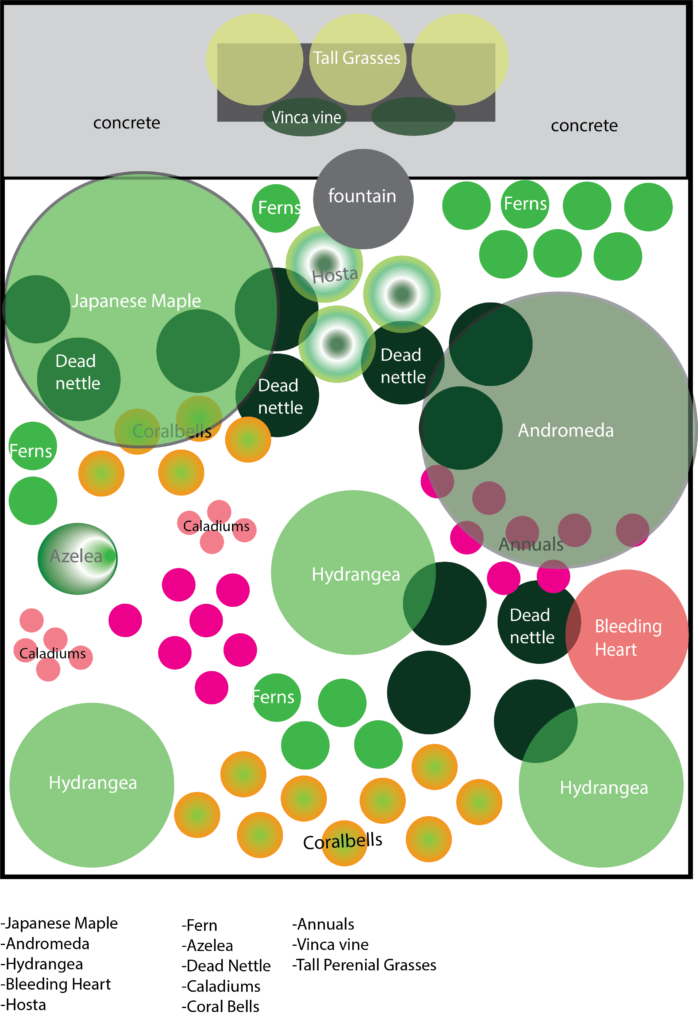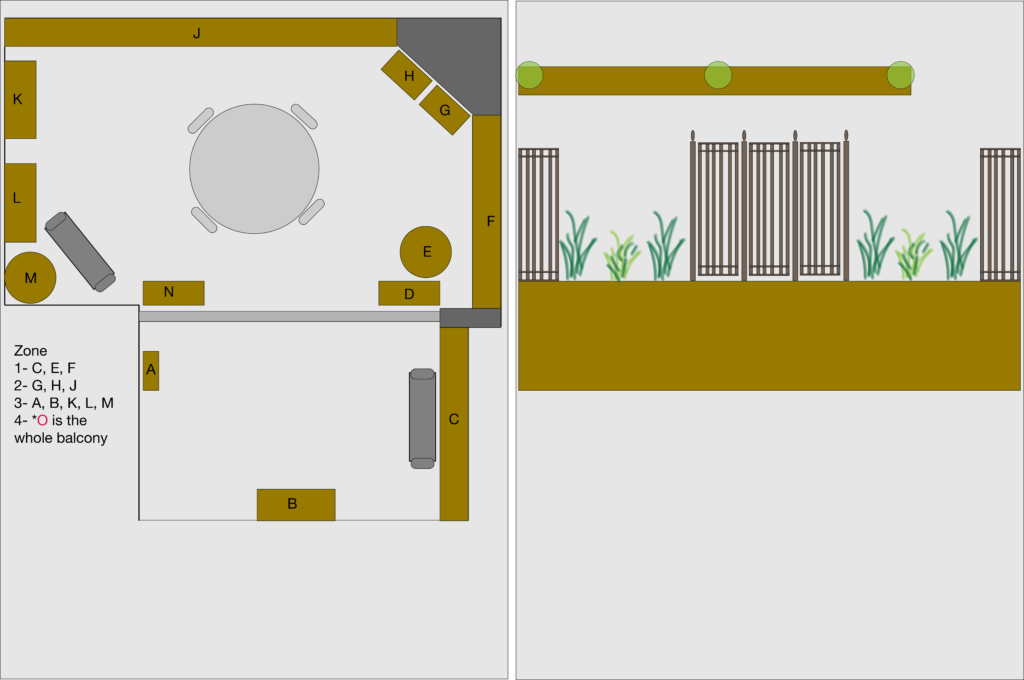Working with Garden floor-plans
The importance of a floor-plan
Garden plans for each job are imperative. After a client has given me the go-ahead, I sit and draft a floor-plan for the garden. In it, I usually include my suggestions. In the garden plan is a list of materials to be used. Such changes may include a sitting area, new garden containers, irrigation, lighting, and plants. When a job is completed, I hold-on to the garden floor-plan for future use. Each year the months of December, January, and February are typically the slow periods. I take the time to get caught up with clients. We speak about what has worked. Floor-plans, for the garden and photography, are used to improve areas that the client would like to change. What should we do differently this year? How can we improve the garden this year? Use new colors and styles of annuals and perennials.

On previously planted gardens, we use the floor-plan to make changes to the present year’s garden. Here we are suggesting more colorful shade perennials and ground covers, as well as less annuals. A new water feature and a new container in the back of the garden.
Why I hold-on to garden floor-plans
A few seasons ago, a client decided to change all the containers. She wanted something more understated. That gave us a reason to change the garden around. We began by making an inventory of the plant material on hand. After deciding on a new garden container to be used, we decided which route we would take the garden. We chose to use more flowering perennials and reduce the use of annuals.
